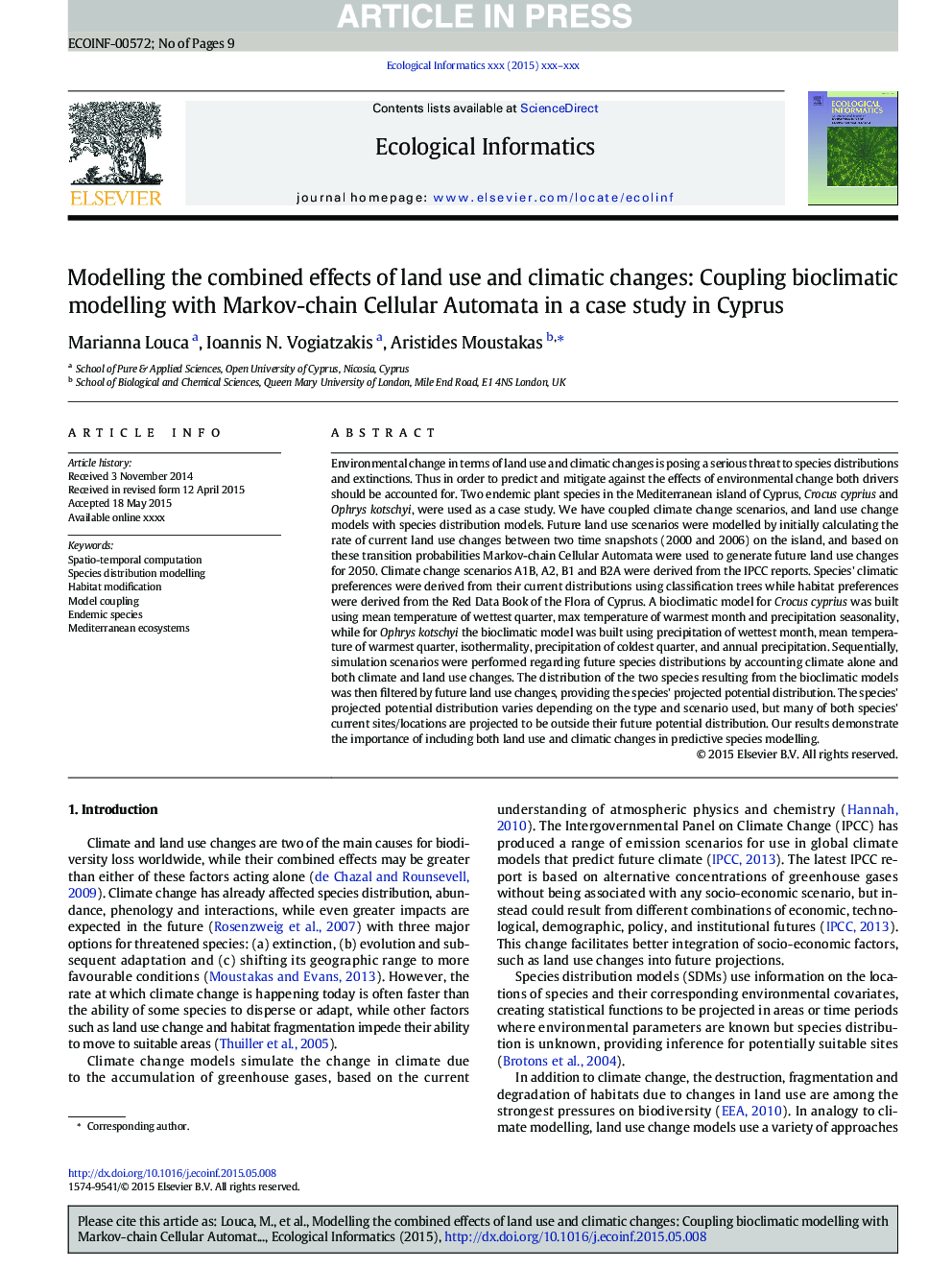| کد مقاله | کد نشریه | سال انتشار | مقاله انگلیسی | نسخه تمام متن |
|---|---|---|---|---|
| 6295737 | 1617204 | 2015 | 9 صفحه PDF | دانلود رایگان |
عنوان انگلیسی مقاله ISI
Modelling the combined effects of land use and climatic changes: Coupling bioclimatic modelling with Markov-chain Cellular Automata in a case study in Cyprus
ترجمه فارسی عنوان
مدل سازی اثرات ترکیبی استفاده از زمین و تغییرات اقلیمی: مدل سازی بیوکلیماتیک اتصال با اتوماتای سلولی زنجیره مارکوف در مطالعه موردی در قبرس
دانلود مقاله + سفارش ترجمه
دانلود مقاله ISI انگلیسی
رایگان برای ایرانیان
کلمات کلیدی
موضوعات مرتبط
علوم زیستی و بیوفناوری
علوم کشاورزی و بیولوژیک
بوم شناسی، تکامل، رفتار و سامانه شناسی
چکیده انگلیسی
Environmental change in terms of land use and climatic changes is posing a serious threat to species distributions and extinctions. Thus in order to predict and mitigate against the effects of environmental change both drivers should be accounted for. Two endemic plant species in the Mediterranean island of Cyprus, Crocus cyprius and Ophrys kotschyi, were used as a case study. We have coupled climate change scenarios, and land use change models with species distribution models. Future land use scenarios were modelled by initially calculating the rate of current land use changes between two time snapshots (2000 and 2006) on the island, and based on these transition probabilities Markov-chain Cellular Automata were used to generate future land use changes for 2050. Climate change scenarios A1B, A2, B1 and B2A were derived from the IPCC reports. Species' climatic preferences were derived from their current distributions using classification trees while habitat preferences were derived from the Red Data Book of the Flora of Cyprus. A bioclimatic model for Crocus cyprius was built using mean temperature of wettest quarter, max temperature of warmest month and precipitation seasonality, while for Ophrys kotschyi the bioclimatic model was built using precipitation of wettest month, mean temperature of warmest quarter, isothermality, precipitation of coldest quarter, and annual precipitation. Sequentially, simulation scenarios were performed regarding future species distributions by accounting climate alone and both climate and land use changes. The distribution of the two species resulting from the bioclimatic models was then filtered by future land use changes, providing the species' projected potential distribution. The species' projected potential distribution varies depending on the type and scenario used, but many of both species' current sites/locations are projected to be outside their future potential distribution. Our results demonstrate the importance of including both land use and climatic changes in predictive species modelling.
ناشر
Database: Elsevier - ScienceDirect (ساینس دایرکت)
Journal: Ecological Informatics - Volume 30, November 2015, Pages 241-249
Journal: Ecological Informatics - Volume 30, November 2015, Pages 241-249
نویسندگان
Marianna Louca, Ioannis N. Vogiatzakis, Aristides Moustakas,
